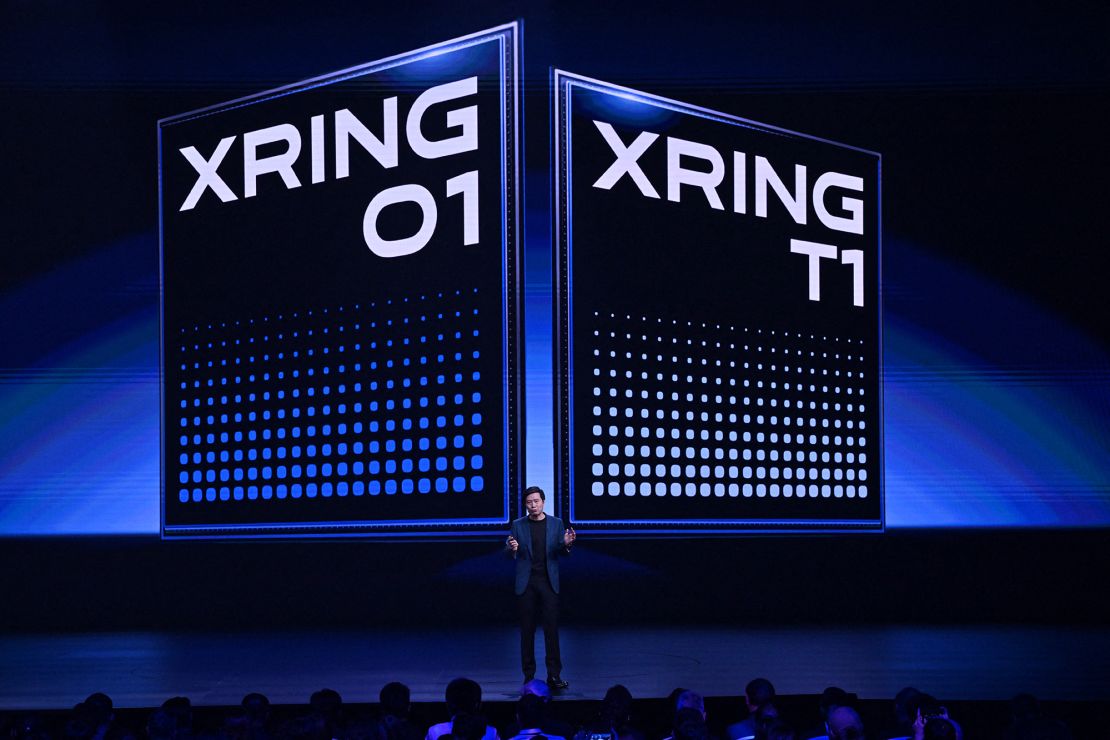In a significant move towards technological self-reliance, Xiaomi has officially launched its first in-house chipsets: the XRING O1 for smartphones and tablets, and the XRING T1 for smartwatches. This strategic initiative not only marks Xiaomi’s entry into the high-end System-on-Chip (SoC) market but also positions the company alongside industry giants like Apple and Huawei in the realm of custom silicon development.

XRING O1: Xiaomi’s Flagship Smartphone SoC
Cutting-Edge 3nm Process Technology
The XRING O1 is manufactured using TSMC’s advanced second-generation 3nm process, incorporating 19 billion transistors within a compact 114.7 mm² die area. This state-of-the-art fabrication technology ensures enhanced performance and power efficiency, setting a new benchmark for Xiaomi’s mobile devices.
Robust CPU and GPU Architecture
At its core, the XRING O1 features a 10-core CPU configuration:
-
2x Arm Cortex-X925 cores clocked at 3.9GHz
-
6x Cortex-A725 cores up to 3.4GHz
-
2x Cortex-A520 efficiency cores at 1.8GHz
Complementing the CPU is a 16-core Arm Immortalis-G925 MP16 GPU, delivering exceptional graphics performance suitable for gaming and multimedia applications.
Advanced AI and Imaging Capabilities
The XRING O1 is equipped with a 6-core Neural Processing Unit (NPU) capable of 44 TOPS (Trillions of Operations Per Second), facilitating advanced AI computations for tasks such as image recognition and natural language processing. Additionally, Xiaomi’s fourth-generation Image Signal Processor (ISP) enhances photography and videography experiences by improving image quality and processing speed.
Integration into Xiaomi Devices
This flagship chipset debuts in the Xiaomi 15S Pro smartphone and the Xiaomi Pad 7 Ultra tablet, both designed to leverage the XRING O1’s capabilities fully. The integration signifies Xiaomi’s commitment to delivering high-performance devices powered by its proprietary technology.
XRING T1: Empowering Smartwatches with Standalone Connectivity
Dedicated 4G eSIM Support
The XRING T1 is Xiaomi’s first self-developed chipset for wearables, featuring an integrated 4G baseband that supports eSIM functionality. This allows smartwatches to operate independently of smartphones, enabling users to make calls, send messages, and access data services directly from their wrist.
Optimized for Power Efficiency
Designed with energy conservation in mind, the XRING T1 offers up to nine days of battery life on a single charge, even with active 4G connectivity. This efficiency ensures prolonged usage without frequent recharging, enhancing user convenience.
Deployment in Xiaomi Watch S4
The XRING T1 powers the Xiaomi Watch S4 15th Anniversary Edition, a smartwatch that combines sleek design with robust functionality. Features include customizable watch faces, real-time camera previews, and seamless integration with Xiaomi’s ecosystem, providing users with a comprehensive wearable experience.
Strategic Implications and Future Outlook
Investment in In-House Technology
Xiaomi’s development of the XRING O1 and XRING T1 reflects a substantial investment in in-house technology, with over 13.5 billion yuan allocated to the XRING O1 project alone. This initiative underscores the company’s dedication to reducing reliance on third-party suppliers and enhancing its competitive edge in the global market.
Positioning Against Industry Leaders
By venturing into custom chip development, Xiaomi positions itself alongside industry leaders like Apple, who have successfully integrated proprietary chips into their devices. This move not only allows for greater control over hardware and software integration but also paves the way for innovations tailored to Xiaomi’s product ecosystem.
Potential for Broader Application
The successful implementation of these chipsets in smartphones and wearables opens avenues for their application in other domains, such as smart home devices and automotive technology. As Xiaomi continues to expand its product offerings, the XRING series could play a pivotal role in unifying and enhancing the user experience across various platforms.
Frequently Asked Questions:
Q1: What is the XRING O1 chipset?
A1: The XRING O1 is Xiaomi’s first self-developed System-on-Chip (SoC) for smartphones and tablets, featuring a 10-core CPU, a 16-core GPU, and advanced AI processing capabilities, built on a 3nm process.
Q2: Which devices will feature the XRING O1?
A2: The XRING O1 will debut in the Xiaomi 15S Pro smartphone and the Xiaomi Pad 7 Ultra tablet.
Q3: What is the XRING T1 chipset?
A3: The XRING T1 is Xiaomi’s proprietary chipset for smartwatches, offering integrated 4G eSIM support and optimized power efficiency, first implemented in the Xiaomi Watch S4 15th Anniversary Edition.
Q4: How does Xiaomi’s chip development impact its position in the market?
A4: By developing its own chipsets, Xiaomi aims to reduce dependency on external suppliers, enhance product integration, and strengthen its competitive position in the global technology market.
Q5: Will Xiaomi continue to use third-party chips?
A5: While Xiaomi is advancing its in-house chip development, it may continue to use third-party chips, such as Qualcomm’s Snapdragon series, in certain devices to cater to diverse market needs.




